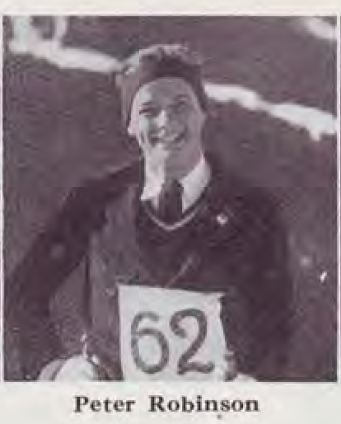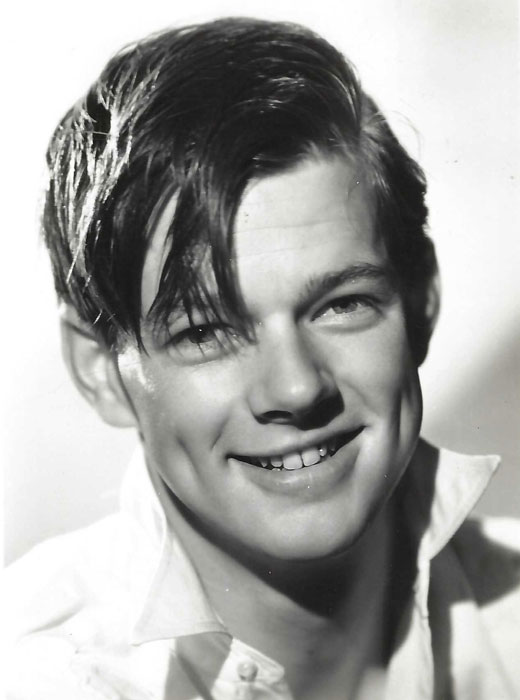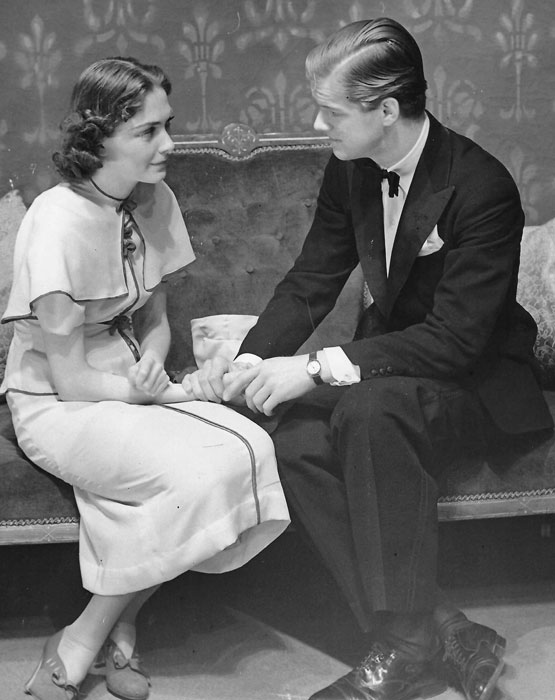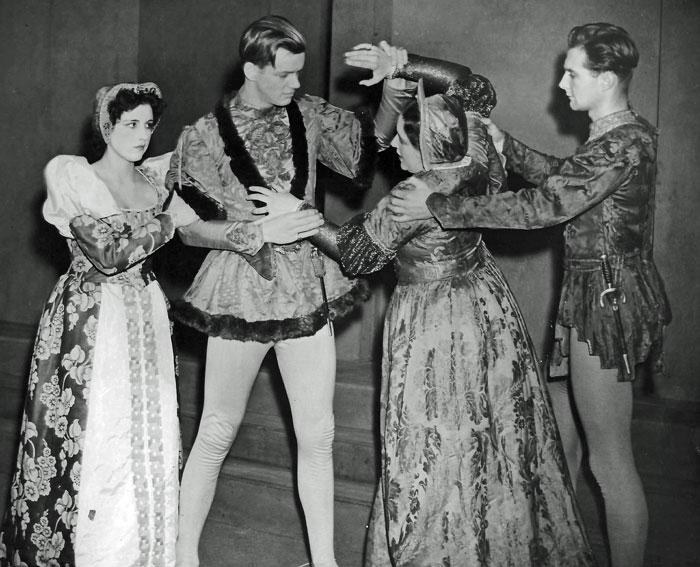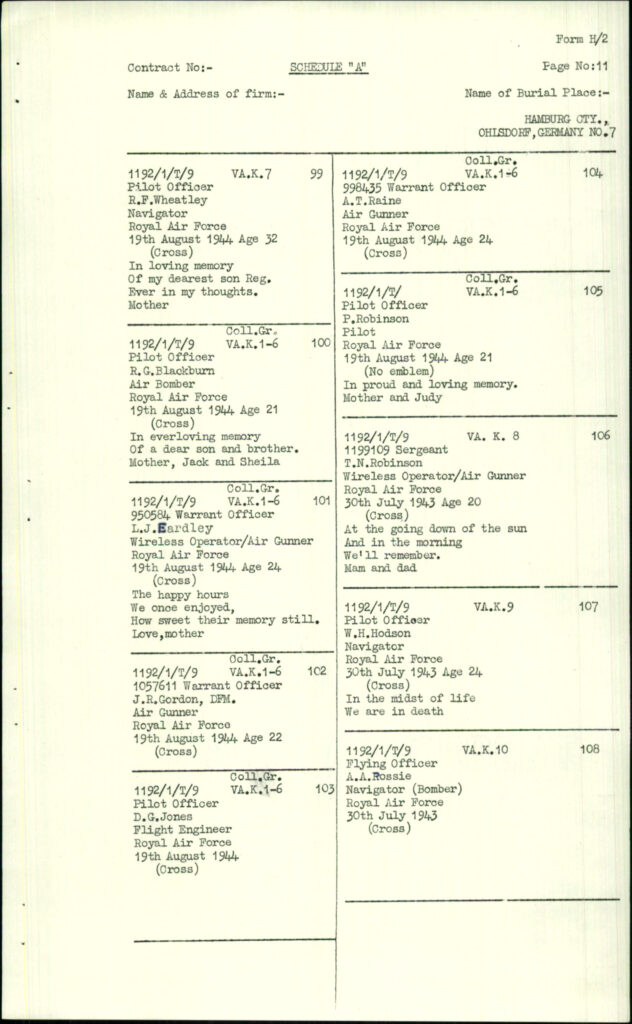A very good friend – Edward McManus – runs the Battle of Britain Monument site. The site is of course dedicated to the brilliant monument to the Battle on the London Embankment. Ted was instrumental in getting this monument done, and while his great modesty would prevent him from ever admitting it, his dedication to the men who fought in the Battle of Britain is nothing short of extraordinary. His website has a list of airmen who fought in the battle, and he has spent countless hours researching, contacting family members and recording data. Ted deserves at least an MBE or some fancy initials after his name. He’s one of the driving reasons we know so much about 601 Squadron in the first place. I’m honoured and proud to call him friend, and happy that he’s been a very great mentor.
Why I bring this up here? Peter Beverly Robinson was on the roles of 601 Squadron, and due to Michael Robinson also being listed, it was always assumed that both Peter and Michael fought in the battle. But as his research is never ending and his efforts tireless, Ted has just recently discovered that not only was Peter injured in France and in fact did not return to 601 during the Battle of Britain – and in fact he wasn’t British in place of birth, but was in fact Canadian. None of us interested in 601 knew this, but Ted contact with the family has brought it to light.
But while Peter was not in fact a holder of the BoB clasp as we had previously thought, he is no less heroic, nor any less interesting. In fact, he’s quite an amazing chap! Thanks to Ted for letting me pilfer from his website as always. The glory is indeed in the telling of the tale!
Peter Beverley Robinson was born on 22nd January 1915 in Toronto, Ontario, Canada. He had two brothers and three sisters.
In 1928 his father was appointed to a position at the League of Nations in Geneva, Switzerland and the whole family moved to Grindelwald in the Bernese Alps.
Peter Robinson became a proficient downhill ski racer and jumper. At the various ski competitions he would have come into contact with and befriended British skiers such as Rhodes-Moorhouse, Demetriadi, Cleaver, Clyde and the American Billy Fiske. All those named were members of 601 Squadron, Auxiliary Air Force and Robinson soon joined them.
The dates of his enlisting and training are currently undocumented but he appears in a 1934 photograph (below) and is recorded as flying in the RAF Jubilee Review at Mildenhall in 1935.
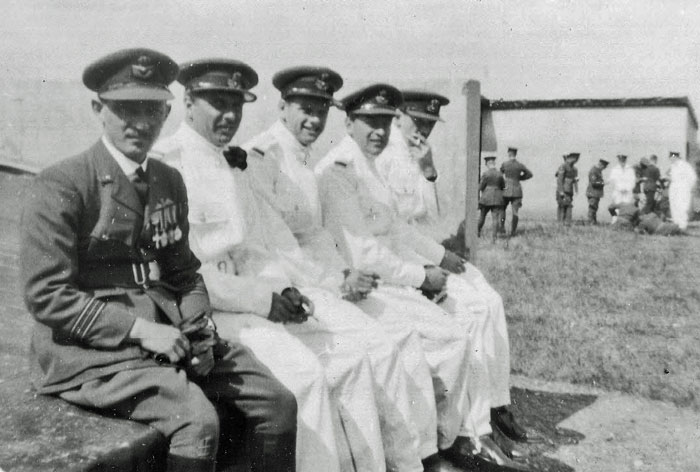
He was still studying at L’Ecole Internationale in Geneva, where he met Elizabeth Maxime Frederick, an American from New Jersey. They were married on 7th August 1938 in New Jersey and moved to New York where he worked as an actor (his family have kindly provided publicity shots, see appendix).
601 Squadron was warned for mobilization in August 1939 and Roger Bushell contacted expatriate members of the squadron, including Robinson who was in a play on Broadway. There is a nice story that he accompanied Billy Clyde and Billy Fiske from New York aboard the Aquitania but as this docked in Southampton on 5th September 1939 and Robinson did not report for service until 8th December 1939, it is likely that he had to finish his contract and return much later.

601 Squadron was then equipped not with biplanes but the twin-engine Bristol Blenheim and Robinson would have had a testing time learning to fly such a different aircraft. He would have had to convert again to the single engine Hurricane in March 1940.
After the German attack in the West on 10th May, ‘A’ Flight of 601 Squadron, including Robinson, was deployed to Merville airfield, west of Lille.
On 20th May 1940 three of their Hurricanes attacked enemy columns between Arras and Marquion. F/O Guy Branch in Hurricane P2699 UF-D was shot down by return fire from a Do17 and baled out unhurt.
There was heavy AA fire and F/Lt. Sir Archibald Hope’s Hurricane was badly damaged, he was able to return unhurt.
Robinson’s Hurricane P3278 was also badly damaged by AA fire, he was able to return but his aircraft was written off.
As the situation deteriorated, 601 was withdrawn to England but still operated over France from its base at Middle Wallop but using Tangmere to refuel before crossing to France.
On 7th June 1940 at 0910 Robinson took off in Hurricane P3490 UF-J, leaving Tangmere at 1045 as one of six aircraft from 601 Squadron and ten from 43 Squadron to patrol between Le Tréport and Aumale and then refuel at Rouen-Boos (code name Thelma).
Combat was joined over Le Tréport with Me109s of 4./JG26 based at Boisjean, south of Montreuil-sur-Mer. Other Me109s from JG2, JG3 and JG20 were also engaged. Combat was broken off at 1225 and the two squadrons landed at Rouen-Boos. At 1300 they redeployed to Beaumont-le-Roger airfield (code name Robson).
At 1745 they left Beaumont-le-Roger to return to England but became engaged with a formation of German bombers with an escort of about thirty Me109s and 110s near Aumale.
Robinson was shot down at 1835 hours at Pulcheux, 2.3 km NW of Douvrend in the Somme Department.
Postwar reconstruction by eyewitnesses claims that Robinson was shot down by Uffz. Hugo Dahmer of 4./JG26, simultaneously Uffz. Rudolf Iberle was shot down by F/Lt. J Simpson of 43 Squadron and collided with Robinson’s aircraft. Either before or after the collision Robinson was able to bale out but sustained a bullet wound to one leg plus other injuries.
(Iberle came down 300 meters from P3490 and was killed. Buried for some time at the spot, he was later transferred to Champigny-Saint-André German Military Cemetery in the Eure – grave 817 Block 9 Row 12).
(An Anglo-Dutch-French team of enthusiasts, Simon Parry, Jeff Carless and Alexis Brument recovered Robinson’s Hurricane in 2016, see: https://www.flickr.com/photos/67251416@N08/albums/72157671593878900/page1)
The eyewitnesss remember Robinson being treated in a small field hospital at Douvrendelle.
His movements from now on rely on family recollections of his account. To avoid capture Robinson must have obtained civilian clothing to disguise or replace his uniform. He stole a bicycle and made his way a considerable distance to the port of Le Havre.
Here he was taken aboard a British hospital ship. An adjacent British hospital ship was bombed and sunk in the harbour, Robinson could see wounded men, many in plaster casts, drowning before they could be rescued.
The 601 ORB records on 13th June ‘Information received that F/O Robinson was safe, though wounded, and was proceeding to England by the first available ship’.
When or where he arrived in England, which hospital(s) he went to and all other details of this time are currently unknown until 20th June, when his casualty report shows him being admitted to the County Hospital, Guildford. No doubt the confusion was increased by his injuries causing him to lose his voice.
His RAF record shows that after 7th June 1940 he was still on the strength of 601 Squadron as ‘Supernumerary Non-Effective Sick‘ and this was the case throughout his speech therapy, which was supplemented by his wife taking him out on weekend leave passes.
Recovered, but still unfit for operational flying, he was posted, now a Flight Lieutenant, as a Fighter Controller to Middle Wallop on 30th January 1941.
On 15th September 1942, a Squadron Leader since March, he went to the Air Ministry and the office of the Assistant Chief of the Air Staff (Policy).
His next posting, which carried a further promotion to Wing Commander, was classed as ‘Staff Duties Liason‘ and placed him on the staff of Air Marshal Trafford Leigh-Mallory (killed with his wife and staff in September 1944 in an air crash).
This short posting ended on 15th November 1943 with a move to HQ Allied Expeditionary Air Force in the Air Staff (Plans) section, no doubt preparing for D-Day.
Robinson was then chosen on 13th March 1944 for a short course at the RAF Staff College, Gerrards Cross, at the end of which he went to the Directorate of Operations (Future Projects) at the Air Ministry, presumably in London, on 12th June 1944.
A month later he moved to a new position within the Directorate before being released from the RAF on 28th November 1945 at No. 10 Personnel Despatch Centre.
Robinson never returned to acting partly because his residual speech deficit eventually transformed into a stammer which he was able to conceal as a speech mannerism but which wasn’t compatible with acting. However he did engage in film making, both in the US and in Britain.
His documentary film Asylum (1972) covers the work of the Scottish psychiatrist RD Laing’s controversial project exploring new methods of psychiatry and psychotherapy at a community named Archway in London.
Robinson later trained as a patent draughtsman and continued practising until his death at which time he was one of the last hand draughtsmen in New York, before the advent of the computer.
He died on 4th October 1991 in New York, USA at the age of 76.
The majority of research and images courtesy of Susan and Wendy Robinson (daughters).
